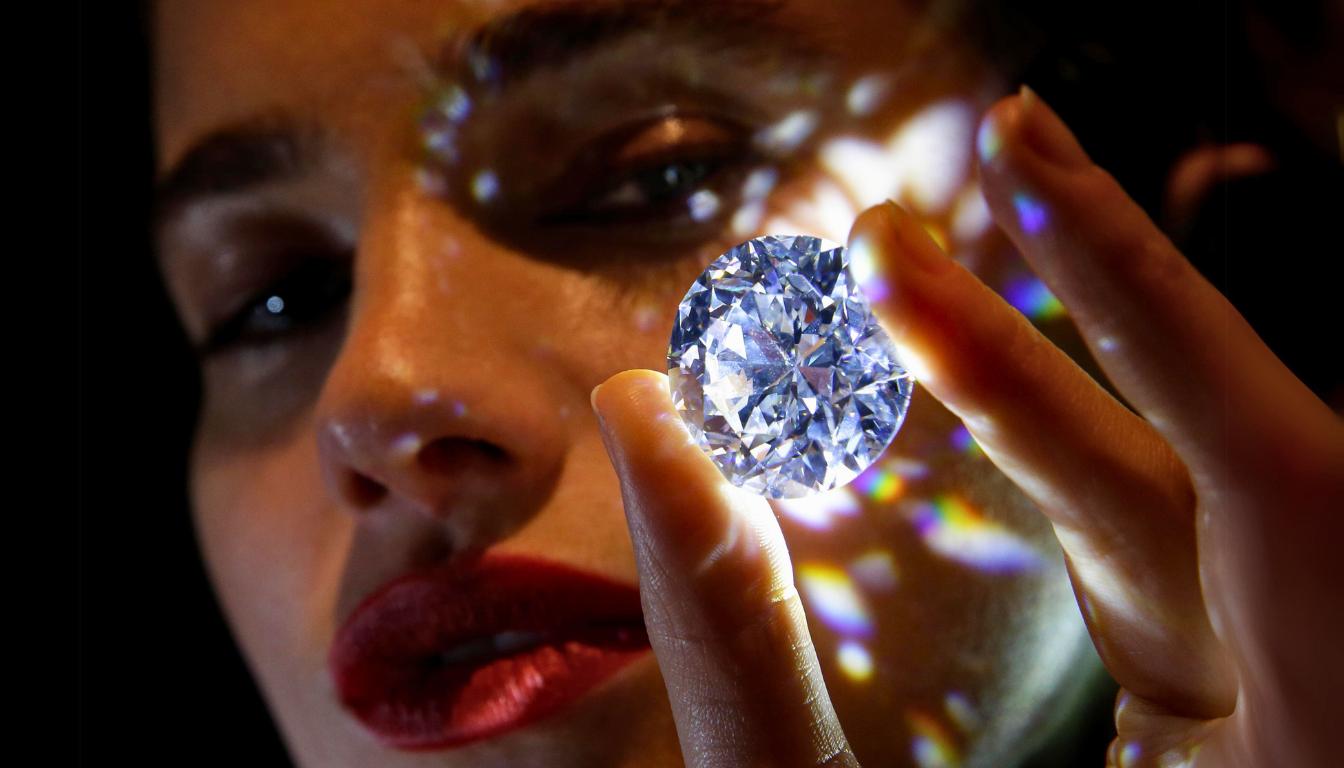People have realized that diamonds have been a status symbol of love and prosperity since ancient times. Their price tags often leave consumers wondering: What really gives diamonds that much premium tag? This article seeks to explore details on the origin of high-cost diamonds, how they are formed, and their geological formation, starting with the market’s influence on the price aspect of the diamonds.
There’s no doubt about it. Diamonds are expensive. He also revealed that diamonds are more expensive than gold or platinum—a lot more. But why are diamonds so expensive, then? I realize that there are all sorts of blog posts out there that are all about a conspiracy by big bad De Beers and jewelers who charge 200% more for diamonds. Let me disappoint you, but none of those things is true. One factor that often goes overlooked is the idea of ‘imperfection in a diamond,’ which can actually contribute to their rarity and value.
A nice quality diamond costs a whopping $5000 per carat. That’s $777,587 per ounce! It is not the rarest material on the planet – for that title, you would have to go to Antimatter, which costs approximately $500 million per carat – but it does make the top five.
De Beers sells less than 50% of diamonds today, and it has no say in diamond prices. But today, the markup for diamond retail is a mere 5–10 percent, not 200 percent. In this article, we shall discuss why are diamonds so expensive.
Table of Contents
1. Geological Rarity
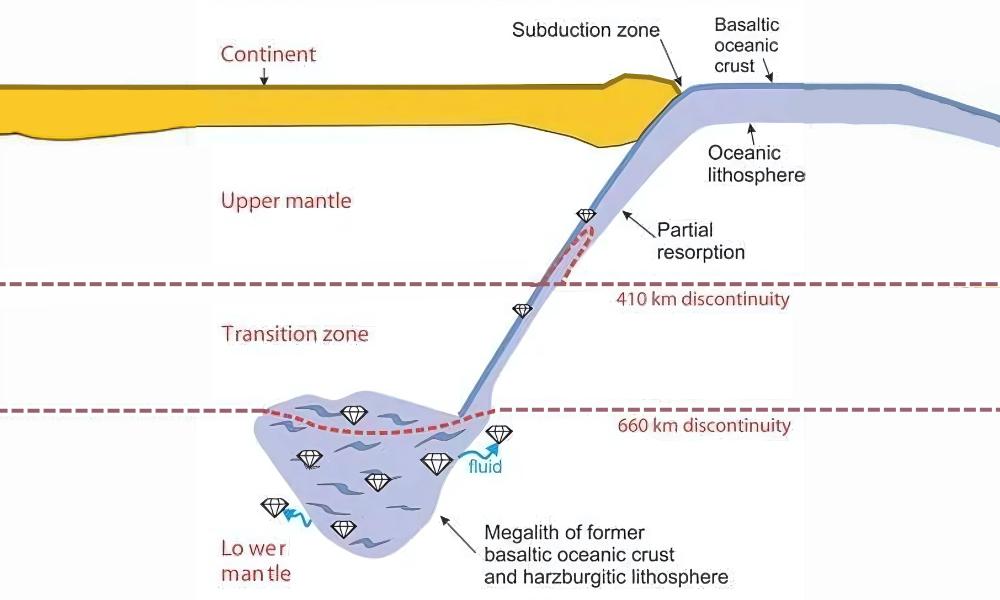
Diamonds are created 140 kilometers beneath the Earth’s surface, where pressures can be over 3 million times compared to that at the surface. It is hard to find other similar structures because the geological environment necessary for their formation is unique. It takes billions of years to form most diamonds, and carbon crystallizes in the process of creating this precious stone. When they do come to the surface, usually through volcanic activity, they are situated in a few parts of the earth.
Once you transport tons and tons of rock and come across one sparkling carat of rough diamond, you’re made, aren’t you? Wrong. The yield for rough diamonds is commonly roughly 30 percent. A one-carat rough diamond will produce a one-third-carat polished diamond.
The yield depends on whether the rough is makeable rough, i.e., the rough will be polished into one stone; sawable rough, which will be sawn in two before polishing; near gem or cleavage rough, which will have to be cleaved into two or many more pieces before polishing and the final (and least valuable) industrial grade diamond rough that will be cut into tools or crushed into powder.
The yield of rare octahedral crystals can be as much as 70 percent if cut into two of the princess cuts, hence why that cut is much cheaper than the round brilliant diamonds. Indeed, annually, most of the carats of gem-quality diamonds mined get polished away and become dust. This geological rarity is the reason why are diamonds so expensive.
Natural vs. Synthetic Diamonds
The real Heber kimberlite diamonds can still be found despite today’s technology’s ability to produce synthetic diamonds with characteristics similar to those of real products. Just like is the case with natural diamonds, the perception of the scarcity of diamonds adds to the cost of these stones and helps explain why are diamonds so expensive. Each consumer needs a diamond unique in its characteristics and the history of its creation. Although synthetic diamonds are in demand and may be significantly cheaper, many consumers still choose natural diamonds.
2. The Four Cs: Cut, Color, Clarity, and Carat Weight

The quality of a diamond is determined by the “Four Cs,” which are crucial in assessing its value and help explain why are diamonds so expensive:
Cut: The right cut of a diamond means that it reflects light, giving it fire and ensuring it looks amazing. Cuts of a diamond may also involve much workmanship, hence influencing the price of the product. This craftsmanship and the factors influencing their value contribute to why are diamonds so expensive.
The cutters have to decide how much of the value can be obtained from each piece of rough that is to be refined. Should you cut one large round that will be sold at a higher per carat rate but consume rougher? Two substandard pears smaller than that cost less but waste less rough? Which will make you get the highest return? These are very complex computations even in the current world where equipment such as the Sarin facilitates measurement and even provides three-dimensional images.
Color: Diamonds may be completely colorless or have a yellow or brown tint. The four most important Cs are cut, carat, clarity, and color; the best diamonds have no hue at all, which is one factor that helps explain why are diamonds so expensive.
Clarity: This evaluates the degrees of internal or external defects, also called inclusions and blemishes. An object with a higher clarity (CL) rating is more valuable than the others because flaws lessen the beauty of a diamond, which is one of the key reasons why are diamonds so expensive.
Carat Weight: Carat weight measures the size of the diamond. Bigger diamonds are scarce and, therefore, cost a lot of money to purchase. This scarcity and the associated demand contribute to why are diamonds so expensive. However, the price for carats can rise with size in a geometric progression because of the basic economic law of demand and supply.
3. Market Demand and Cultural Significance
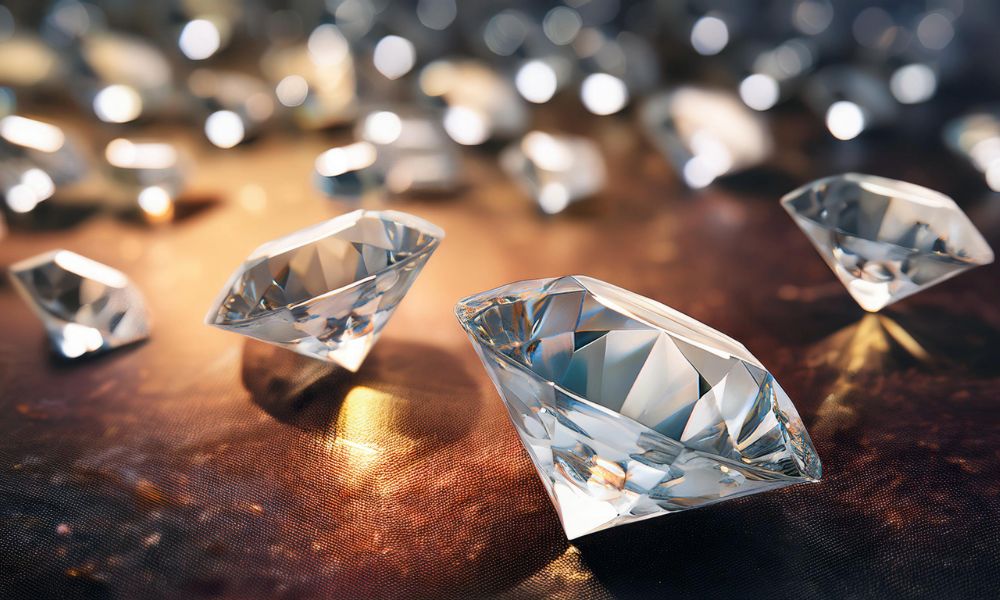
Diamonds have been socially constructed with acceptance as gifts for lovers, engagement, and wedding rings. These issues, together with an influence over public perception, were partly created by marketing campaigns by companies like De Beers in the mid-twentieth century. The caption “A Diamond is Forever” was not only an advert for diamond engagement rings but also made people believe that diamonds are a valuable asset that is permanently valuable, which helps explain why diamonds are so expensive.
Since the situation in which De Beers controls more than half of the global production of diamonds is now over, the company does not subsidize consumer promotion in order to create demand for diamonds. Not a single generic diamond advert has been spotted by a whole generation of consumers. But yet, people all over the world continue to ask for diamonds.
A few years ago, most diamonds were consumed in the US and Europe, but today, their consumption is led by developing nations such as China and India. These countries will continue to demand more diamonds as they are likely to become more richly endowed in the future.
However, despite sales growth, there is so much competition at every stage of the distribution channel that the diamond industry itself is shrinking and consolidating: saying that one mistake or loss of financing equals going out of business is not an exaggeration. There are fewer survivors; this means that there are fewer retailers, fewer manufacturers, fewer diamond wholesalers (most of the diamonds today pass directly from the cutter to the retailer), and fewer rough dealers. The decline in production is attributable to exhausted resources inherent in mines that are now at the end of their production line, which contributes to why diamonds are so expensive.
Why are diamonds so expensive? It is costly to place diamonds in the market; there are few high-quality gems, and people worldwide need them. It’s just supply and demand all over again.
Psychological Factors
Would people be willing to spend the amounts of money that they do on diamonds? The answer lies in the emotional bond that consumers have with the product. These are, in many cases, perceived as heirlooms that are handed down from one generation to the other, a factor that increases their value. Such perceptions enhance demand and, therefore, prices because people will always prefer the product brands that they trust. And that is one of the reasons why are diamonds so expensive
4. Supply Control

The diamond industry has been dominated by some large companies, led by De Beers, which for most of the twentieth century owned or controlled a large share, often a majority, of the diamonds in circulation. These companies succeeded in controlling the supply side of diamonds, thus keeping the prices high regardless of the increasing supplies. Supply control is one of the dominating reasons why are diamonds so expensive.
Ethical Concerns
Over the timeframe under analysis, new shifts, such as ethical sourcing and the issue of blood diamonds or diamonds mined in captive zones stated for armed conflicts, have impacted consumers. Those consumers who are willing to pay a premium for products from companies with ethical policies will change market prices. Ethical concerns also contribute to the reasons why are diamonds so expensive.
5. Investment Value
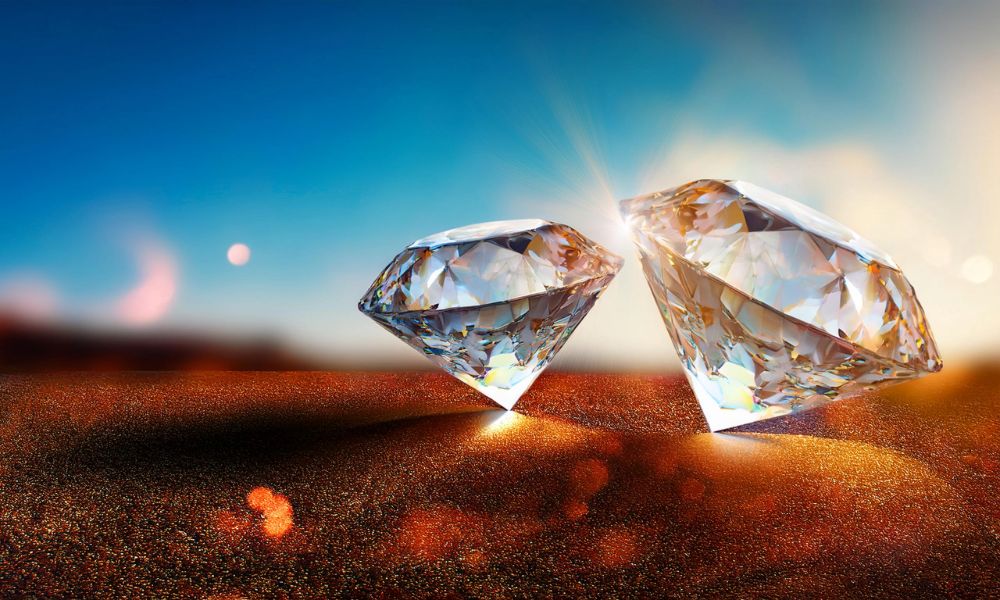
A diamond is a treasure for many people, and they are eager to purchase this shiny invention. Some notable examples of stones include fancy-colored or high-clarity stones, which can grow tremendously in value over a period. These potential investments contribute to their value propositions, which helps explain why are diamonds so expensive and, in turn, their price.
6. Economic Factors
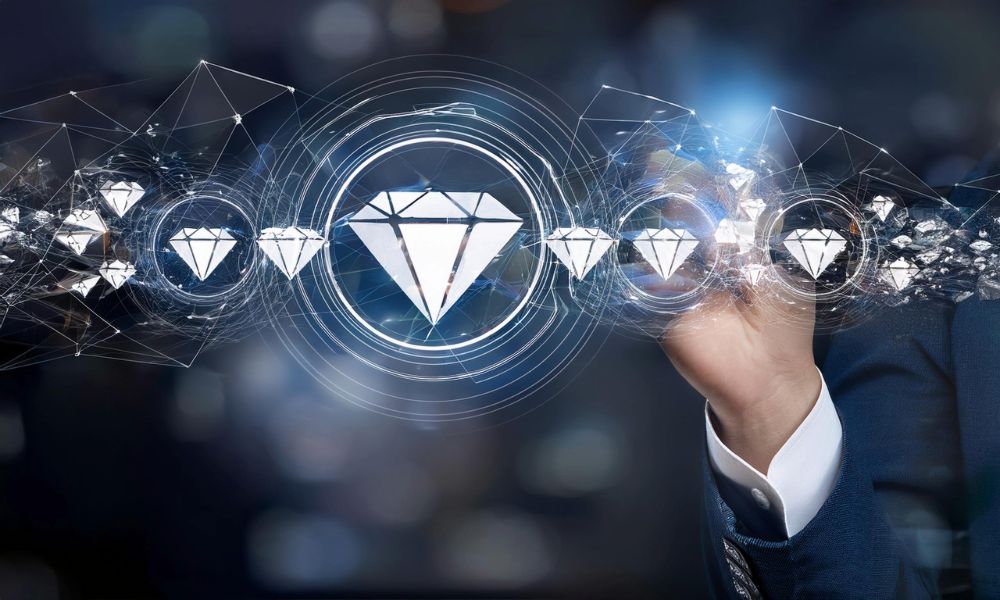
As it is with any other material, the price of diamonds may rise or drop within the existing economic structure. Diamond prices can be affected by elements such as inflation, currency fluctuations, and changes in the level of consumption. Due to such fluctuations, fashion luxury products experience a downturn in sales during periods of recession, while there is an upswell during periods of economic growth, contributing to why are diamonds so expensive and resulting in higher prices of the products.
Mining requires a huge capital investment to be made, particularly with a view to developing mines. Cutters require millions of dollars to purchase rough to support their cutting factories. Of course, it means that jewelry producers require the purchase of diamonds and gold to produce jewelry. Retailers also need to have stocks on hand for when people will purchase them (and often, the vendor has to supply these products on consignment). All links in the diamond pipeline need a large amount of capital at each production stage.
The banks aren’t coming with funds for the diamond business because they have no experience in appraising the diamonds that are being offered as security. Funding is a severe problem in the industry, and it is getting worse every day. Apparently, this applies to every industry out there, but the inputs in the diamond business are much more expensive than in any other business that is similarly engaged. This high-cost structure contributes to why are diamonds so expensive. It’s like going for a mortgage every week or just three months at an affordable cost. The interest adds up.
Conclusion
The price of diamonds is subject to geological availability, market fluctuations, cultural perception, and, last but not least, the perception of clients. Knowing these factors gives a clue as to why diamonds have always enjoyed a proud place in society and why they are so expensive. Understanding these dynamics is key to grasping why are diamonds so expensive. With this, while over time, the market will introduce new ethical issues and new technologies will mean new forms of diamond pricing, the core essence of diamonds will always be appealing. For either fancy and sentimental use or even for business use and value enhancement, diamonds will retain their bright standing in the hearts of consumers globally.
FAQs about why are diamonds so expensive?
Q1. Why is diamond overpriced?
Limited Supply is the primary reason why are diamonds so expensive: First, people believed that natural diamonds were one type of stone that existed on the Earth’s surface, however, they are very rare and valuable. Because of its scarcity, they attracted high prices because of its limited availability.
Q2. Are diamonds really worth the money?
Like most materials, jewelry and industrial diamonds do not possess an intrinsic value; yet, that assertion is false for both categories of diamonds. The value invested in gem-quality diamonds you place in rings stems from the value we as a society give to those diamonds, which is a key reason why are diamonds so expensive.
Q3. What’s so special about diamonds?
Every stone has rather unique features, and there is no way to replicate any diamond as each one is produced differently. As a person owns them, each stone is carved with its own disposition and temperament. Durability — A diamond is known to be the hardest substance found by man; that’s why it does not corrode, and that is why are diamonds so expensive
Q4. Are diamonds more valuable than gold?
It would be wise to note that, moving by the value of the monetary standards gleaming on the stones, diamonds are worth more than gold. However, gold is even scarcer than diamonds and is usually more stable, which makes it more favorable. This comparison highlights some of the complexities involved in understanding why are diamonds so expensive.
Q5. Is gold rarer than diamonds?
Diamonds are also more abundant than other valuable gemstones, such as emeralds, rubies, and tanzanite. In fact, it’s even elementary gold in its natural form, and the chances of coming across one are slimmer than coming across a diamond. This comparison raises intriguing questions about the market dynamics and cultural perceptions that contribute to why are diamonds so expensive.
Stay Tuned to Gems Tycoon for all gems-related articles.

